|
Airco DH.9A - Early Version
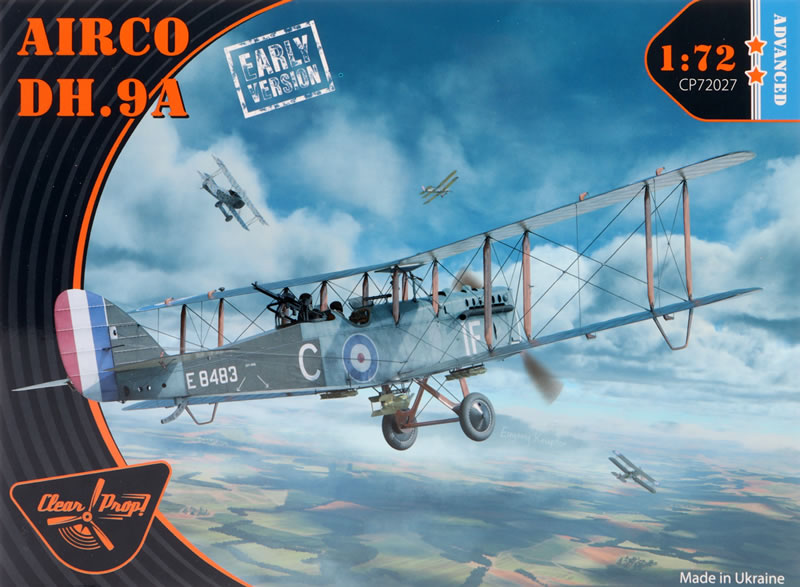
Clear Prop!, 1/72 scale
S u m m a r y : |
Catalogue Number: |
Clear Prop! Kit No. CP72027 - Airco DH.9A - Early Version
|
Scale: |
1/72 |
Contents & Media |
Grey injection moulded sprues, one clear plastic sprue, photo-etched fret, decals and instructions. |
Review Type: |
First Look. |
Advantages: |
Excellent moulding, great detail in both plastic and PE, good decals and very clear and complete instructions with colour call-outs all through. |
Disadvantages: |
None noted apart from the care needed removing sprue gates from some parts and the mass of tiny PE parts that will need some patience in applying.. |
Conclusions: |
Another cracker of a kit from Clear Prop, well presented, detailed and moulded. Not one for a beginner but in the hands of a skilled modeller a great replica will be on the shelf - highly recommended to those of you with an interest in this era. |
Reviewed by Graham Carter

The Airco DH.9A, also referred to as the DH.9A or ‘Nine-ak’ was a massively successful bomber/reconnaissance development of the DH.9 which itself was developed from the successful 1916 DH.4 bomber widely used in WWI and afterwards in various guises. The DH.9 had an unreliable Puma engine and the company decided to re-engine the aircraft with the American V-12 Liberty which proved to be a stroke of genius. Almost 2000 were built for the RAF, serving in over 30 squadrons from June 1918 until early in the 1930s, while the Russians copied it and the engine as the R-1 and built over 2400 of them. It was also exported to a number of countries such as Afghanistan, Australia, Canada, Iran, Latvia, Mongolia, Portugal and the US Navy and Marine Corps. So there are lots of interesting schemes available for the modeller. Although it was designed by de Havilland for Airco, most production was conducted by Westland, who took the design and developed it into the odd Walrus as well as the Wallace/Wapiti series.

Previous kits of this aircraft have been released by Merlin, Maquette and KP as injected, with Classic Planes doing a vac-form one and also an ambulance conversion, while Blue Rider did a conversion to the Puma-engined DH9. The KP kits are quite lovely but this kit will supersede it now.
The Ukrainian company Clear Prop continues to produce fabulous kits for modellers in the ‘one true scale’ and this is no exception.
Cler Prop!'s 1/72 scale DH.9A comes in the now-familiar top opening box with a great image of a 99 Sqn aircraft fighting off a Fokker VII over France in 1918.
Removing the lid reveals a very strong inner box which opens to reveal a clear resealable sleeve containing two larger sprues for the mainframe and wings and two smaller ones for all the detail parts in dark grey, as well as a small clear sprue for the windscreens.
Also included is a 76-part PE fret, decals for five examples and a 22-page A5 colour instruction booklet. The presence in the parts map of over forty blanked out parts on the sprues indicate that more variants of this ubiquitous aircraft are in the pipeline
The parts are exquisitely moulded with no flash or short-shots and barely a whiff of a seam. Sprue gates are generally fine but some do impinge slightly onto the outer surface of smaller parts such as struts and flying surfaces so some care will be required in separating and cleaning up these areas. Internal structures are nicely done and both the engine and cockpit interior is well provided for. Careful painting will really show off this detail. Colours are called out in each stage of construction and refer to a paint chart on the front page by name and for A-Mig paints.
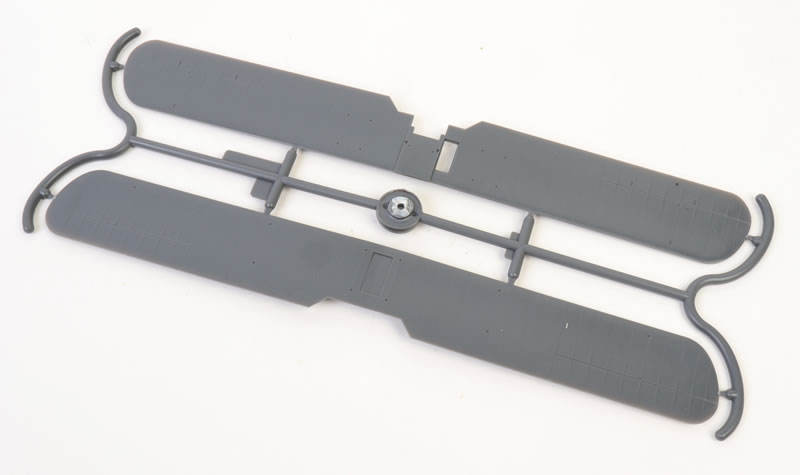
The fuselage comes in several parts with sides, top and bottom separate but having chamfered edges to maximise glue contact - some care will be needed when joining these together.
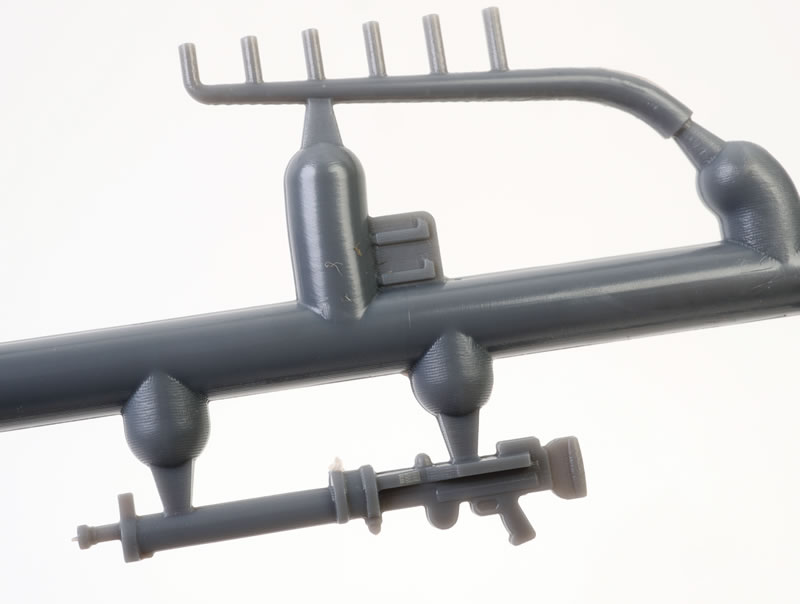
The engine will unfortunately be invisible once the fuselage is joined up, unless the modeller decides to do some serious surgery to the cowling - even leaving parts A2 and A12 off will not reveal much. The instrument panel can either be painted or a decal and PE part used. The undercarriage is very nicely detailed and each wheel comes in three parts so that the tyre and hubs can be painted separately - nice!
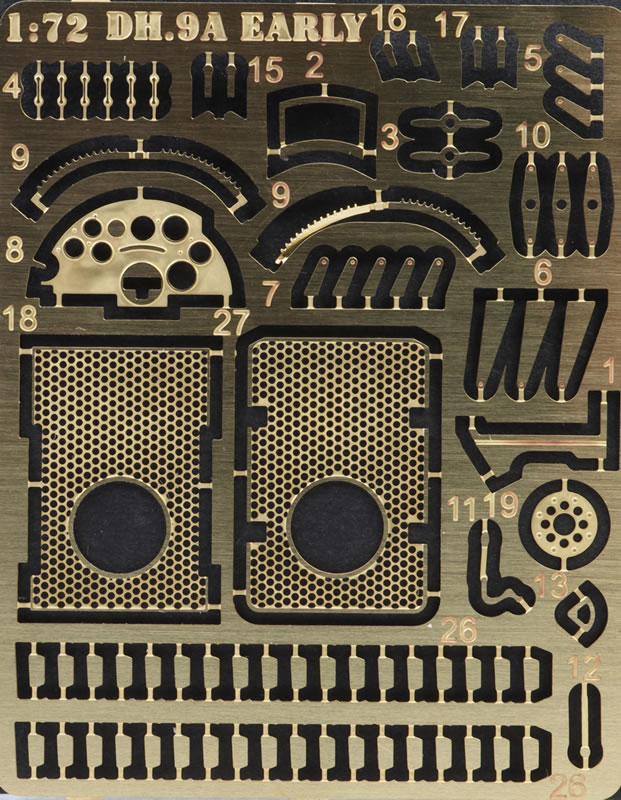
The radiator front and rear has PE panels that will really add to the appearance of the engine area.
Flying surfaces are really well moulded as single parts with very fine trailing edges and subtle ribbing. The tiny holes indicating the struts locations may need a bit of enlarging if you are adding the struts after painting the surfaces.
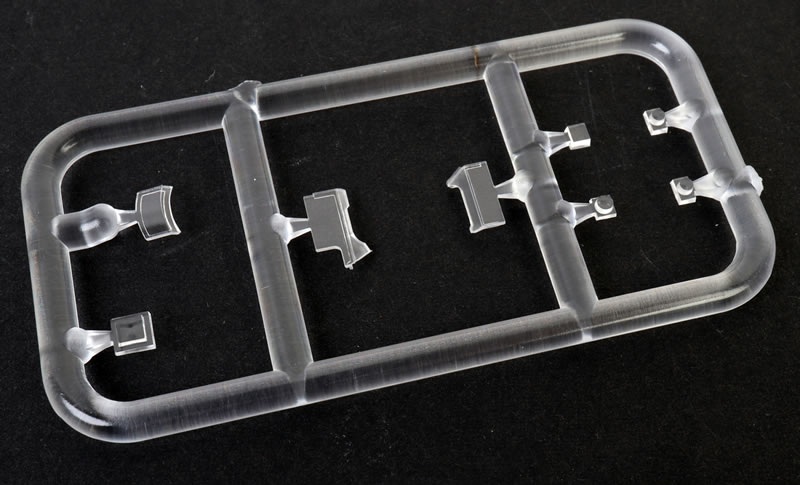
Tiny PE control horns will test one’s eyesight and patience. The Scarf ring is nicely detailed with PE elevating mechanisms. Two different bombs are provided, the eight smaller 20 pounders having four tiny PE fins to attach - 32 in all!! There are no seatbelts provided.
Each step of construction is very well drawn and the instructions conclude with a rigging diagram, generic stencil placement and then five four-view colour drawings for the decal choices, as follows:
-
F1000, of 110 Squadron, France , August 1918, RAF Green over Clear Doped Linen.
-
F1010, of 110 Squadron, France , September 1918, in the same scheme,
-
E8483, ‘C’ of 99 Squadron, France, October 1918, same scheme but with grey forward and rear fuselage,
-
E8553 ’N’ of 155 Squadron at Hendon October 1918 same scheme as 3 above, and
-
H95, ‘H’ of 27 Squadron in India in 1922 in the same scheme as 3 and 4 above.
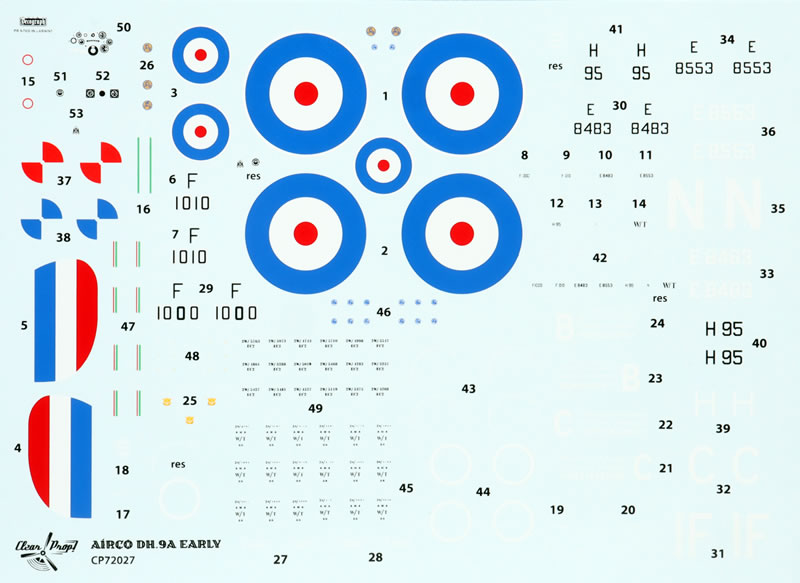
Decals are beautifully printed and include white wall tyre rims that are so hard to paint. The backing sheet is a very pale blue that makes identifying some of the numerous white markings a bit difficult to find and cut out. Please Mr Clear Prop, use a darker backing sheet.
All-in-all a lovely kit that fills a void in the modelling kit list and, if this is your interest area, it comes highly recommended to a competent modeller - it is not a beginners kit.
Thanks to Clear Prop! for the review sample.
Review Text Copyright © 2023 by Graham Carter
Images Copyright © 2023 by Brett Green
Page Created 19 June, 2023
Last updated
19 June, 2023
Back to HyperScale Main Page
Back to Reviews Page |
